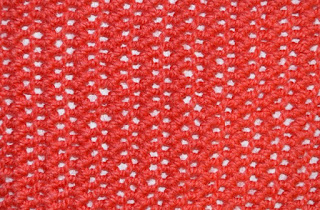Stitch of the Month – August 2015
The Double Basket stitch pattern creates a lot of texture. The
pattern is worked using only knit and purl stitches but the textured effect is quite
dramatic. The pattern is reversible making it a good choice for scarves and shawls.
The fabric tends to pull in slightly through the width so it’s a good idea to
do a swatch particularly when combining the Double Basket stitch with another stitch pattern.
Double Basket Stitch
(Multiples of 18 stitches + 10)
Row 1 (RS) *K11,
p2, k2, p2, k1; repeat from * to last 10 sts; k10
Row 2 P1, k8, p1, *p1, [k2, p2] twice, k8, p1;
repeat from * to end
Row 3 *K1, p8, [k2, p2] twice, k1; rep from * to last
10 sts; k1, p8, k1
Row 4 p10, *p1, k2, p2, k2, p11; repeat from * to
end
Rows 5 to 8 Repeat rows 1 through 4
Row 9 Knit
Row 10 [p2, k2] twice, p2, *p10, [k2, p2] twice; rep
from * to end
Row 11 *[k2, p2] twice, k2, p8; rep from *, repeat
fro * to last 10 sts; [k2, p2] twice, k2
Row 12 [p2, k2] twice, p2, *k8, [p2, k2] twice, p2;
rep from * to end
Row 13 *[k2, p2] twice, k10; rep from *, repeat from
* to last 10 sts; [k2, p2] twice, k2
Rows 14 to 17 Repeat rows 10 through 13
Row 18 Purl
These 18 rows form the
Double Basket stitch pattern.






















.jpg)



